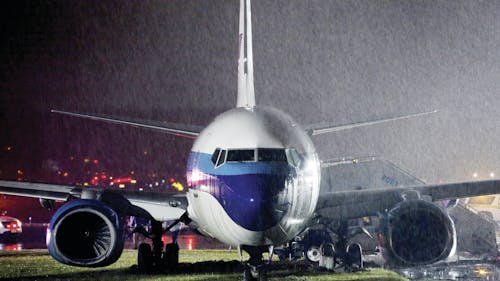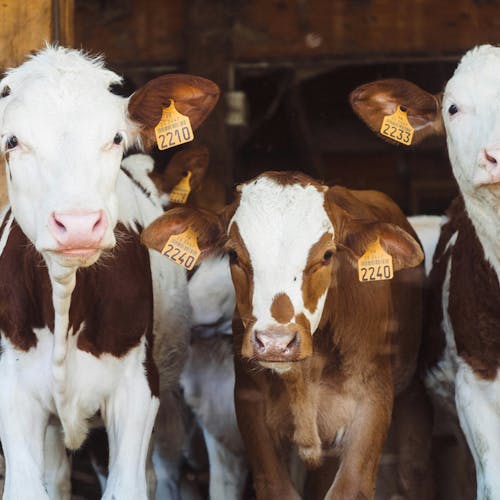SCIENCE: How do airplanes work?

On Oct. 27, an airplane carrying Republican Vice Presidential nominee Gov. Mike Pence (R-Ind.) skidded off a runway at LaGuardia Airport.
The National Transportation Safety Board (NTSB) determined it was caused by an instrumental error. Panels on the top of the wing, called spoilers, did not deploy upon landing, preventing the plane from slowing down sufficiently, according to the Wall Street Journal.
The plane ran into materials on the side of the runway intended to slow down planes in the event that they skid off the runway, according to the site.
Airplanes work on the simple concept of air pressure. Hot air expands, becoming lighter than colder air and moving above it. In other words, air with a higher pressure would fall while low-pressure air moves up, according to the website for the National Aeronautics and Space Administration (NASA).
Wings on airplanes are curved such that the wing causes air moving over it to be faster. This faster air subsequently has lower pressure than the air below the wing. The pressure difference is what lifts the wing, also known as generating “lift,” according to the site.
There are four related forces in flight: lift, weight, thrust and drag. Weight is the force counteracting lift. Thrust is the force propelling the plane forward, while drag is the force opposing it, according to the site.
Jet engines on an airplane are not just used to create lift, but to control the thrust. The engine takes in air at the front, compresses it, heats it and fires it out the back to push the plane forward, according to explainthatstuff.com.
When in motion, an airplane can change direction in a variety of ways. To roll, the plane must move flaps at the ends of its wings, called ailerons. The wing that has its aileron lowered will rise up, putting the plane into a rolling motion, according to the NASA website.
To direct the plane upward or downward, flaps on the tail move up and down. These flaps are called elevators and essentially point the nose of the plane in different directions. Lowering the elevators, for example, points the nose downward to descend the plane, according to the site.
The plane can move left or right by moving a rudder on the tail either left or right. Turning the rudder to the right turns the plane to the right, for example, according to the site.
Turning left and right is called adjusting the “yaw,” and directing the nose up or down is called adjusting the “pitch,” according to the site.
When bringing the plane down for descent, the engine speed is gradually reduced to lower thrust and lift. The landing gear of the plane is lowered, further reducing its speed, according to avjobs.com.
In addition to the elevators and rudder being adjusted to steer the plane, flaps on the wings are raised. Flaps increase drag, further slowing down the plane, according to the site. Commercial aircraft generally touchdown at a speed of about 120 miles per hour relative to the ground.
The Federal Aviation Administration (FAA) requires a runway safety area for to reduce the risk of airplane damage in the event of any excursion from the runway during takeoff or landing, according to their website.
The FAA requires this area to be kept clear of any surface variations, like humps or depressions, drained to prevent water accumulation, clear of any unnecessary objects and a slope of 3 to 5 percent, according to the site.
Only frangible objects are allowed in this safety area. Frangible objects are those that can break or distort when impacted by another object. They should have minimal mass and absorb a minimal amount of energy, according to the site.
Frangible objects are only meant to minimize the overall potential for damage during an accident, rather than impeding the motion of the plane. These are normally on a concrete base, according to the site.
Pence’s airplane ran into frangible materials on the side of the runway, and the NTSB is still working to determine if they functioned properly, according to the Wall Street Journal.
Harshel Patel is a School of Arts and Sciences junior majoring in molecular biology and biochemistry. He is the digital editor of The Daily Targum. He can be found on Twitter @harshel_p.



